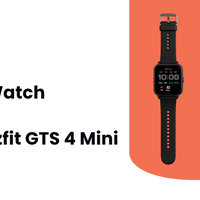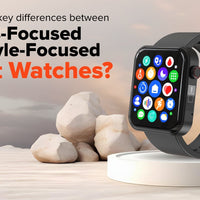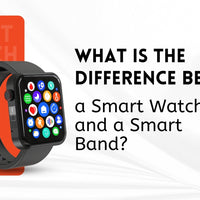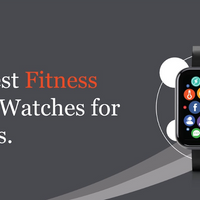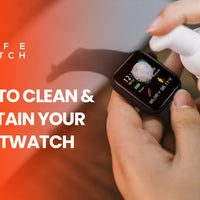Smartwatches have surged in popularity, becoming a staple in the arsenal of tech-savvy individuals. These devices promise to revolutionize our health and fitness routines by offering features designed to monitor and improve our well-being. But are these promises too good to be true? In this article, we will delve into the benefits and potential drawbacks of smartwatch technology, examining whether these gadgets are genuinely beneficial for our health or if they may be causing more harm than good.
The Benefits of Smartwatch Technology

1: Health Monitoring
One of the primary advantages of smartwatches is their ability to monitor various health metrics in real-time. Features like heart rate monitoring, sleep tracking, and ECG readings provide users with valuable insights into their health. By regularly tracking these metrics, individuals can detect abnormalities early, potentially preventing serious health issues. For example, a user might notice an irregular heart rate pattern and seek medical advice, potentially catching conditions like arrhythmia before they become more severe. Additionally, the continuous monitoring of sleep patterns can help users identify sleep disorders such as sleep apnea, leading to improved sleep hygiene and overall health.
![]()
Furthermore, integrating blood oxygen level monitoring and stress tracking in newer models offers a broader spectrum of health data. These metrics can help users manage their stress levels and recognize signs of respiratory issues, prompting them to take proactive measures. For individuals with chronic health conditions, smartwatches can be particularly beneficial. Diabetics, for instance, can use smartwatches to monitor glucose levels (with compatible sensors), enabling better management of their condition and reducing the risk of complications.
2: Fitness Tracking
Smartwatches have transformed the way we approach fitness. They offer features like step counting, calorie tracking, and exercise recognition, which motivate users to stay active. Personalized fitness plans and goal-setting features help users maintain a consistent workout routine, contributing to overall physical well-being. For instance, many smartwatches can track various workouts, from running and cycling to swimming and yoga, providing users with detailed analytics on their performance and progress.

The motivational aspect of fitness tracking should be considered. Gamification elements, such as earning badges for reaching milestones or participating in challenges with friends, can significantly enhance user engagement and commitment to fitness goals. This social aspect encourages community and accountability, making fitness a more enjoyable and sustainable part of daily life. Moreover, smartwatches often include GPS functionality, allowing users to map their runs, hikes, or bike rides and analyze their routes and performance. This feature is precious for outdoor enthusiasts and athletes looking to optimize their training.
3: Health Reminders and Alerts
Smartwatches can send reminders to encourage healthier habits, such as standing up after prolonged sitting, drinking water, or taking medication. These gentle nudges help users maintain a healthier lifestyle by incorporating small, beneficial actions into their daily routines. For instance, a reminder to stand up and move every hour can combat the adverse effects of prolonged sitting, which has been linked to increased risk of various health issues, including cardiovascular disease and obesity.

Additionally, medication reminders can be life-saving for individuals with chronic conditions or those on complex medication regimens. These alerts ensure that users take doses, improving adherence to treatment plans and overall health outcomes. Similarly, hydration reminders can prevent dehydration, which is crucial for maintaining optimal bodily functions and overall well-being. Reminders to practice mindfulness or engage in breathing exercises can be incredibly beneficial for those managing stress or mental health issues. These small, consistent practices can significantly reduce stress levels and promote a more balanced, healthy lifestyle.
4: Mental Health Benefits
Many smartwatches now include features designed to support mental health, such as guided breathing exercises, stress monitoring, and mindfulness apps. These tools can help users manage stress and anxiety, contributing to better mental health. For example, guided breathing exercises can help users relax and reduce their heart rate during stressful situations, promoting a sense of calm and well-being.
Stress monitoring features often analyze heart rate variability (HRV), providing insights into how the body responds to daily stressors. This data can help users identify patterns and triggers of stress, enabling them to take proactive measures to manage their mental health. Mindfulness apps, integrated into smartwatches, offer a convenient way to practice meditation and mindfulness, even during busy schedules. These practices have been shown to reduce symptoms of anxiety and depression, improve focus and concentration, and enhance overall emotional resilience.
Furthermore, some smartwatches offer mood-tracking features, allowing users to log their emotions and reflect on their mental state over time. This self-awareness can be a powerful tool in managing mental health, as it helps individuals recognize when they might need additional support or intervention. Overall, the mental health benefits of smartwatches can play a significant role in promoting a balanced and healthy lifestyle.
The Drawbacks of Smartwatch Technology
1: Over-Reliance on Technology
While smartwatches provide valuable health insights, there is a risk of users becoming overly reliant on them. This dependence can lead to anxiety if the device malfunctions or provides inaccurate readings. Additionally, users may prioritize data from their smartwatch over professional medical advice, potentially leading to health risks. For example, if a smartwatch indicates everything is normal, a user might ignore symptoms requiring medical attention, delaying critical diagnosis and treatment.
Moreover, the constant availability of health data can lead to obsessive behavior, where users frequently check their metrics and worry about minor fluctuations. This hyper-vigilance can contribute to health anxiety, where individuals become excessively concerned about their health based on the data provided by their smartwatch. Users must remember that while smartwatches can provide valuable insights, they are not substitutes for professional medical advice and regular check-ups with healthcare providers.
2: Privacy Concerns
Smartwatches collect significant personal health data, raising concerns about privacy and data security. There is a risk that this sensitive information could be accessed by unauthorized parties or misused by companies, leading to potential privacy breaches. For instance, if health data is not adequately protected, it could be exploited by malicious actors for identity theft or insurance fraud.
The commercialization of health data raises ethical concerns. Companies may use this data for targeted advertising or sell it to third parties without users' consent. This lack of transparency and control over personal data can undermine trust in these technologies and deter users from fully utilizing their features. To mitigate these risks, users must understand their devices' privacy policies, enable security features such as encryption and two-factor authentication, and regularly review app permissions to ensure that their data is being handled responsibly.
3: Potential for Inaccurate Data
Although smartwatches are equipped with advanced sensors, they are not infallible. Inaccurate readings can occur due to various factors, such as improper fit, sensor limitations, or technical glitches. If users rely solely on their smartwatch data, these inaccuracies can lead to misguided health decisions. For example, a faulty heart rate monitor might show abnormally high or low readings, causing unnecessary panic or a false sense of security.
Additionally, environmental factors such as temperature, humidity, and lighting conditions can affect the accuracy of sensor readings. Physical activities that involve rapid or irregular movements can also lead to erroneous data. Users should be aware of these limitations and cross-check their smartwatch data with other reliable sources or consult healthcare professionals when in doubt.
4: Impact on Social Interactions
The constant connectivity provided by smartwatches can be both a blessing and a curse. While they enable users to stay informed and connected, they can also disrupt social interactions. The temptation to check notifications or track health metrics during social activities can detract from face-to-face interactions and contribute to disconnection.
For instance, receiving notifications during a conversation can be distracting and convey a lack of interest or attention to the person you are with. This behavior can strain relationships and reduce the quality of social interactions. To mitigate this, users should consider setting boundaries for smartwatch usage, such as enabling Do Not Disturb mode during social gatherings or designating specific times to check notifications. By being mindful of their smartwatch usage, individuals can maintain meaningful connections and enjoy more fulfilling social interactions.
Balancing the Benefits and Drawbacks
It is essential to strike a balance to make the most of smartwatch technology while mitigating its potential drawbacks. Here are some tips:
1: Use Smartwatches as a Supplement, Not a Replacement
Smartwatches should complement traditional health practices and professional medical advice, not replace them. Use their data as a helpful tool, but consult healthcare professionals for medical concerns. For example, while a smartwatch can track your sleep patterns, it cannot diagnose sleep disorders. If you notice persistent sleep issues, seeking advice from a sleep specialist rather than relying solely on your smartwatch data is essential.
2: Be Mindful of Data Privacy
Protect your health data using strong passwords, enabling two-factor authentication, and regularly reviewing privacy settings. Be cautious about sharing sensitive information with third-party apps. For instance, when installing new health apps, carefully read the privacy policies and permissions to ensure your data will be used responsibly. Consider using apps and devices from reputable companies with robust security protocols to minimize the risk of data breaches.
3: Stay Present in Social Situations
Make a conscious effort to limit smartwatch usage during social interactions. Set boundaries, such as turning off non-essential notifications or designating specific times to check your device to ensure it does not interfere with your relationships. For example, you can check your smartwatch only during breaks or specified times to stay fully engaged during conversations and activities. This mindful approach can help maintain the quality of your social interactions and strengthen your relationships.
4: Verify Data Accuracy
To improve the accuracy of your smartwatch's readings, regularly calibrate it and ensure it fits properly. When possible, cross-check the data with other sources or devices, and consult healthcare professionals if you notice any inconsistencies. For instance, if your smartwatch consistently shows abnormal heart rate readings, consider using a dedicated monitor or consulting a healthcare provider for further evaluation. By taking these steps, you can ensure that the data you rely on is as accurate and reliable as possible.
Final Words
Smartwatch technology offers a range of benefits that can enhance our health and well-being, from real-time health monitoring to fitness tracking and mental health support. However, it is crucial to remain aware of the potential drawbacks, such as over-reliance, privacy concerns, and data accuracy issues. By using these devices mindfully and responsibly, we can maximize their positive impact on our health while minimizing potential risks. Smartwatches can be powerful tools for improving our lives, provided we use them wisely. By balancing leveraging their benefits and mitigating their drawbacks, we can ensure that smartwatches contribute positively to our overall health and well-being.










